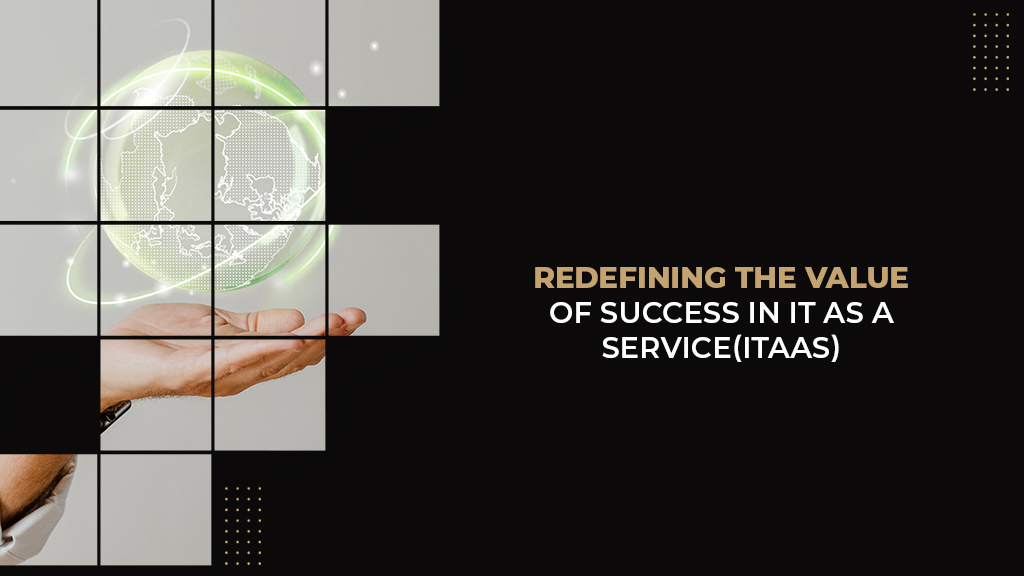Redefining the Value Of Success In IT As A Service(ITAAS)
The IT landscape has changed dramatically before enterprises would purchase IT hardware and infrastructure, but now many have adopted ITaas subscription-based services, where they no longer buy infrastructure. Moving to an as-a-service model involves transitioning from traditional internal IT departments to specialized IT service offerings tailored to specific industrial and organizational needs.
Perhaps your organization is skeptical about moving to a service-oriented model or in the process of outsourcing your IT operations. The following will offer a detailed understanding as you begin your journey and also highlight some of the major reasons for seeking out a Managed Service Provider.
Understanding ITaaS
IT as a Service is a transformative operational model that allows a line of business or user to consume Information Technology as a managed service allowing users to pay only for the services they require. This operating model can be adopted by internal IT departments or external vendors.
This means that a business can outsource IT requirements to a third party who is responsible for providing and maintaining, all or some of the amount of hardware, software, and support that it needs for an agreed-on monthly fee or subscription-based model.
ITaaS Delivery Models
With new service models emerging in recent years. ITaaS can be divided into three broad most popular delivery models namely: Software as a Service (SaaS), Platform as a Service (PaaS), and Infrastructure as a Service (IaaS)
1.
How Does SaaS Work?
Software as a service distributes software hosted by a third- party provider to a user via the internet by a browser client. Out of all three cloud services mentioned, SaaS is the most popular choice among businesses as it is not complex to use and is more scalable according to your business growth.
Benefits:
Applications are accessible via smartphones and other devices
Does not require software installations
Data can be safely stored online and easily accessible Highly advanced software can be used instantaneously
Examples:
Gmail Google Drive
Google Calendar Google Sheets
2.
How Does PaaS Work?
Software as a service distributes software hosted by a third- party provider to a user via the internet by a browser client. Out of all three cloud services mentioned, SaaS is the most popular choice among businesses as it is not complex to use and is more scalable according to your business growth.
Benefits:
Database integration
Provides ready-to-use development environment, which helps save development costs and time Development team collaboration
Maintenances and backups are handled by the service provider
Application design, testing, and development Web integration
Information security
Examples:
Microsoft Azure Salesforce
IBM Cloud
Google Cloud Platform
3.
How Does IaaS Work?
This service enables the user to construct and control their servers, data storage facilities, networks, and operating systems. To set up the hardware, servers, network, security, and other components, more technical expertise is required.
Benefits:
Gives the user the freedom of specifying hardware specs and setting up operating systems
Provides easy to use resource scaling options
Saves the user hardware maintenance and repair costs
Examples:
Microsoft Azure
Amazon Web Services (AWS)
Major areas companies should consider in their overall strategic plan for transitioning to ITaaS
The reality for businesses is that it is time-consuming and expensive to develop and maintain your IT infrastructure in line with industry best practices. This leads to a situation where your business’s IT environment is inadequately maintained, with unresolved cascading issues, system failure, and downtime. For a business to become a truly digital enterprise, the following areas need to be addressed:
1.
Prioritize communication:
The key to successful transitioning lies in a thorough and well-planned communication dialogue with department leaders and other employees. By explaining the benefits of the updated model allows employees to ease into the transformation journey more smoothly.
2.
IT management framework:
IT leaders should focus more on rethinking security, network, and risk management policies, because of the increased number of interactions with third parties.
3.
Finance:
The as-a-service model completely changes IT’s traditional finance model. Knowing how to adapt to a pay-as-you-go consumption basis will lead to a successful model.
4.
Choosing a service provider:
The transformation from a traditional IT services model to ITaaS requires IT management to embrace and realign. Since ITaaS looks different for every business, deciding who to trust with the entire scope of your business’ IT can be challenging. It is important to choose the right MSP for your needs, with the qualifications and experience to take your company to new levels.
ITaaS Takes the Customer- Focused Approach
The classic traditional model of ITaaS is more concerned with how to perform functions as cost-effectively as possible. Now ITaaS focuses more on delivering value to the customer and end-user. Customer satisfaction, engagement, and improved customer service are the key indicators of a successful service.
OGT is a Managed IT Service Provider that can assist you with scalable and agile solutions that are ready to meet changing customer and market demands. Contact us today to find out how you can gain a competitive advantage, grow your business and get the IT that suits your business needs.


